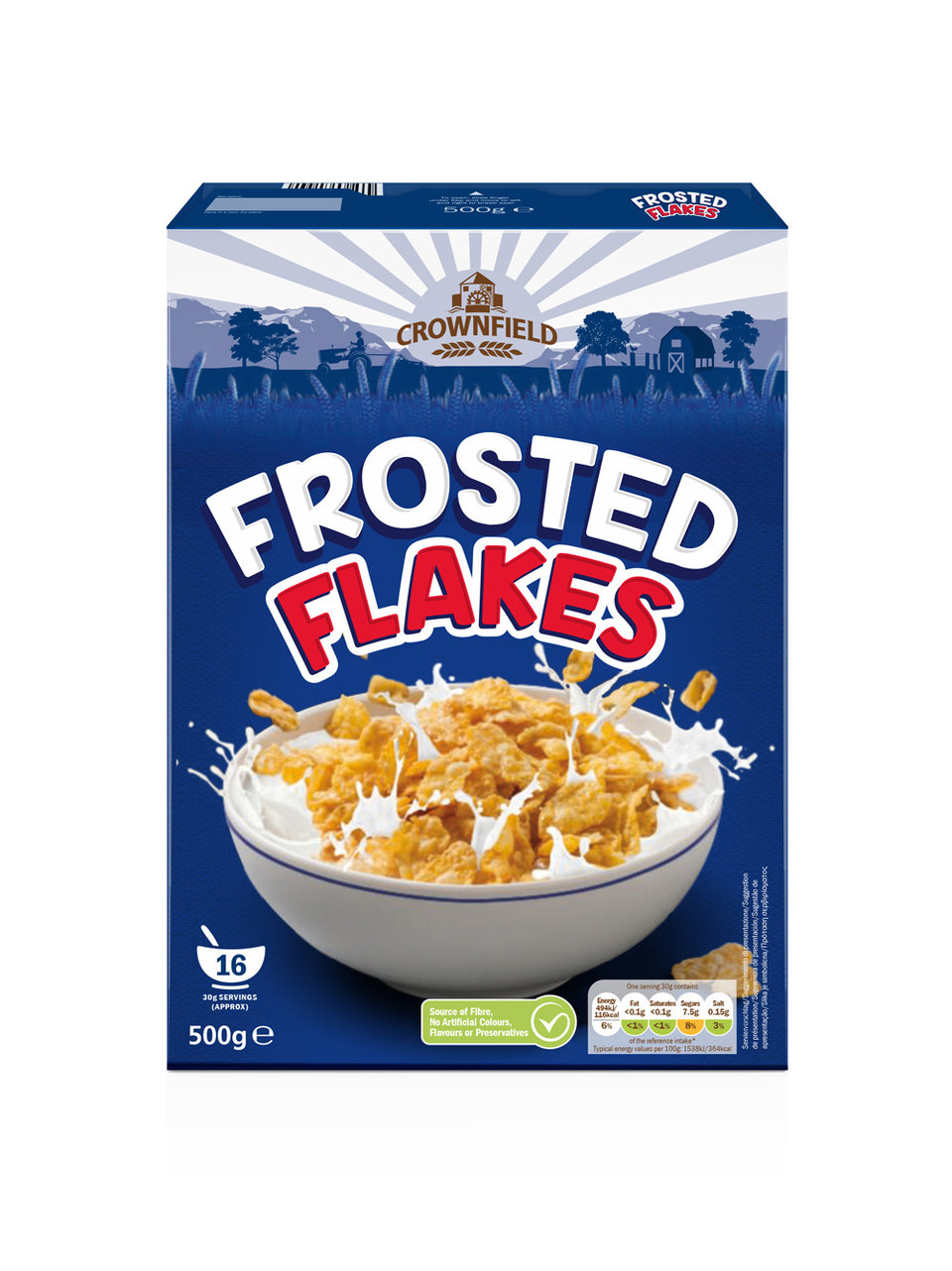Packaging design
Pester power: protecting children from junk food marketing
Packaging featuring popular cartoon characters exerts a huge influence on children – and the parents who buy their food. Barbara Crowther of the Children’s Food Campaign discusses the issue of pester power, the marketing of unhealthy foods to children, and the efforts being made to redress the balance on supermarket shelves with Chris Lo.
Although parents’ personal tolerance to Peppa Pig – the playful porcine pre-schooler who has had kids transfixed around the world since first airing in 2004 – may vary by individual, few would deny that the programme sets a broadly positive example for its young audience, encouraging creativity, environmental conscientiousness and, yes, healthy eating habits.
While Peppa Pig – with help from the likes of the fruit and veg-themed superhero, Super Potato – extolls the virtues of a healthy diet on screen, it’s a different story on supermarket shelves.
According to a report published in June 2019 by the affiliated charities Action on Salt, Action on Sugar and the Children’s Food Campaign, the Peppa Pig brand is one of the worst offenders in the UK when it comes to marketing unhealthy foods to children. The analysis, which studied child-friendly food packaging in all major UK retailers, found that around half of all packaged foods featuring Peppa Pig were high in fat, salt and/or sugar.
“Certainly, a diet according to Peppa Pig would not be a healthy diet,” says Children’s Food Campaign co-ordinator Barbara Crowther with a wry chuckle. “If you went and shopped every product that Peppa Pig was endorsing, you would have ended up with yoghurts, cakes, biscuits, home-made cake mix, ice creams, ice lollies – there was very little [that was healthy]. And this is the paradox – if you watch the programmes, Peppa Pig is very much promoting healthy messages.”
Calorific cartoons: the problem with child-friendly packaging
It’s hardly fair to pick on Peppa Pig in particular. For decades, licensed characters from children’s films and TV have been contracted out to retailers and product manufacturers to promote their foods, not to mention the original mascots created by brands themselves, from Tony the Tiger to the Kool-Aid Man.
This form of marketing is so pervasive that even many adults hold a nostalgic place in their hearts for these characters, and the reason it’s so pervasive is because it works. Studies have shown that young children prefer branded foods over identical unbranded options, and even report a better flavour in products using familiar brand assets.
While kids might not be paying the bill at the supermarket checkout, their influence over their parents’ purchasing decisions – commonly described as ‘pester power’ – is very real. And with rising levels of obesity and associated conditions in children all over the world, the Children’s Food Campaign’s report highlighted that 51% of cartoon-branded food and drink products in the UK are for unhealthy products loaded with fats, saturated fats and sugar.

Barbara Crowther, Children's Food Campaign
“Parents do report ‘pester power’, and they especially report it in relation to the licensed TV and film characters, because children can name those characters,” says Crowther. “But if you look at where those characters tend to be used and where they’re placed, overwhelmingly they seem to be put on products that have higher levels of sugar or fat.
“There are much healthier products out there that parents could be buying for their children, but which are not packaged to appeal to children – they’re packaged to appeal to healthy adults.”
Are retailers and manufacturers catching on?
After extensive campaigning, there is evidence that the big UK retailers are starting to transition away from aiming this kind of manipulative marketing at children. In early January, discount supermarket giant Lidl announced that by spring 2020 it would remove all cartoon characters from its own-brand cereal boxes.
“We know pester power can cause difficult battles on the shop floor and we’re hoping that removing cartoon characters from cereal packaging will alleviate some of the pressure parents are under,” said Lidl’s head of corporate social responsibility Georgina Hall.
Lidl’s move has been quickly followed by similar commitments from Aldi and Asda, the latter of which may be particularly significant given that unlike the discount retailers, Asda’s own-brand products must compete with a vast array of branded products that will retain their mascots and brand tie-ins.


New packaging for Lidl’s Crownfield Cereals. Images courtesy of Lidl
“There’s potentially more at stake, I guess, for Asda because their own-brand sits in a bigger category than the own-brand cereal at Lidl. Asda doing it is particularly welcome. We would argue that there’s a potential for a new norm around breakfast cereal,” says Crowther, while also applauding Lidl’s other efforts in the area, such as its development of more child-friendly packaging and formats for healthy foods, such as fruit and veg snack bags.
On the branded side, there are also signs that the owners of popular children’s characters may be starting to exert their own influence in terms of which products are suitable for licensing deals. In this – despite its relentless focus on commercialising its intellectual properties through merchandising – Disney has emerged as a forward thinker, Crowther says.
“If the characters are advocating health messages and they’re trying to be responsible in their editorial policy, then let’s associate those characters, when it comes to food, to the same kind of messages,” she argues.
“For example, for The Incredibles 2, there was some product association going on with that, but on breakfast cereal, the partnership was based on a cereal with low levels of sugar. We applaud that. Those companies are very powerful in influencing what the brand manufacturers do, and incentivising reformulation. They can say, ‘You can have our characters but you need to take the sugar out of the product.’”
From the top: regulation of on-pack marketing and labelling
As well as calling for brands and retailers to eliminate child-friendly cartoons on unhealthy foods and harness the power of these characters to promote healthier choices, the Children’s Food Campaign and its partner charities are also calling for a bolstering of government regulations in this area – central to this is the visibility and accuracy of nutritional labelling.
“Nutritional labelling in the UK at the moment is a voluntary system,” says Crowther. “We’ve all been calling for mandatory, front-of-pack, colour-coded labelling.”
The ‘traffic light’ style of nutritional labelling – with key nutritional factors marked in red, amber or green depending on their share of the recommended daily intake – has become widely recognised under the UK’s voluntary system, although if the practice becomes state-mandated there may be a reassessment around whether this is the most user-friendly method.
Other options include France’s Nutri-Score and Australia’s Health Star Rating systems, which aggregate all of a product’s nutritional characteristics into an even simpler overarching score to help guide consumers.
The packaging industry has woken up to the potential value of waste plastics
Crowther sees voluntary efforts made by the likes of Aldi, Lidl and Asda as a promising first step in shifting corporate attitudes towards responsible promotion of food to children, but argues that only government intervention can create lasting change.
“If you take, for example, placement of junk food at tills – Children’s Food Campaign lobbied on this 25 years ago,” says Crowther. “Actually, companies did make a change but then they slipped back – and that’s the problem with voluntary regulation.
“We just need have some red lines put down by government, and then companies are able to flex within those. Otherwise, individual company action can be undermined at a future stage, by rivals taking advantage or with a change of guard that doesn’t see it as important anymore.”
Even for national governments, it’s not easy to take on the global brands through regulation. In 2016, Chile mandated that all foods failing the state’s nutritional profile model would have to include on-pack stop signs flagging high levels of sugars or fats, and banning these products from carrying child-friendly mascots. The country was challenged by the US at the World Trade Organization, while headlines such as ‘Chile slays Tony the Tiger’ screamed across the media landscape.
As society continues to evolve its thinking around nutrition and food marketing practices (especially targeting children) that have gone mostly unnoticed for decades, it seems likely that pressure on industry – whether from public perception or government policy – will increase in the coming years. When the worm finally turns, companies in the sector would do well to be ahead of the game on responsible packaging and nutritional information.
“The companies that are the most forward-looking and the most progressive on this will be the ones that will capture the trust of the public,” says Crowther. “They’re the ones that have got the least to fear from what may happen in the future. But the trend is towards being much stricter on the provision of nutritional information, and I think there’s going to be a big call for that.”